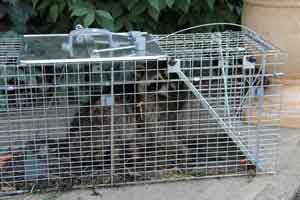You’re fond of animals—at the very least you prefer to live and let live. Still, it’s hard when it comes to the critters’ inability to respect your personal space, and you need a way to deal with animals in the attic. The mess they leave behind and the damage they cause your house can’t be ignored, so what can you do to keep them out of your space without causing them harm? When a polite request proves ineffective, try the following methods to give them a firmer notice of eviction.
1. Use Deterrents
Humane pest control is a multi-step process that should begin with deterrents. Deterrents will give the pests a chance to leave on their own. There are popular formulas for safe deterrents like concoctions that use essential peppermint oil, bitter apple, or a variety of other substances that rodents find detestable. Spreading and spraying these concoctions along windowsills and rodent highways such as beams and baseboards is the first step in taking away the rodent red carpet and signaling to the pests that it’s time to go. Depending on the type of animals in the attic, you will find that different substances will be effective.
2. Clean Up
You also will want to take this opportunity to clean up. Remove all food from accessibility, even if it’s not very convenient for the moment. Put pet foods in chew proof containers. Clean up clutter and debris that provides nesting material and hiding spots. The key is to make the environment as inhospitable as possible for the uninvited guests. You can also check humane pest control websites for prepared mixes, if you don’t want to make your own.
3. New Technology
The next step may be to purchase some new devices that have come on the market, such as ultrasonic pest repellents. There are a variety of options that all operate on the same general principles—they emit noises which rodents can’t stand. It may be unpleasant for them to be driven from their home by the equivalent of a jackhammer going off in their ears, but it’s hard to find a kinder way of saying ‘get out’. There’s disagreement about whether these are effective long term, but as a short term boost to your general message of eviction, they can’t hurt.
4. Live Traps

5. Seal The Entry Points
In conjunction with the traps, you will want to inspect your home thoroughly to locate the areas of entry. The final steps are about getting the last stragglers out and keeping new ones from arriving to take their place. Seal up any points of entry you locate, and perhaps go ahead and spray some extra peppermint oil or other deterrent. Rodents leave trails, which they will follow again and again, so messing up their sense of smell with essential oils to masque their trails is another step in keeping them out.
In the case of larger animals such as possums and raccoons, employ the same general methods, but you will need to hire a company that can come take the animals away and make sure they don’t come back.
Summary
Humane extermination may be more complicated than use of poisons or kill traps, but aside from not being karmically appealing—poisons and kill traps have their own drawbacks. There’s the unsanitary nature of kill traps in which animals die and begin to decay, for starters. Ultimately, the humane process has less of an ‘eww’ factor than kill traps, and poses less danger to your family and pets than poison. You’ll also feel better knowing you did your best to treat the animals in the attic in the manner you would hope your family and pets would be treated if by some twist of fate you were the pests.

